The Pomology Research
一、Research on fruit breeding
(一)Variety breeding of Pears
1. Pear’Taichung No. 5’
Pear ‘Taichung No. 5’ was named in 2019 and obtained the plant variety rights in 2021. ‘Taichung No. 5’ has medium tree’s vigor and short bearing shoot, and its fruit takes about 145 days from bloom to maturity. The fruit is large and its fruit pulp is delicate, juicy and slightly acidic. The total soluble solid contents are 12.5°Brix. The shelf life is about 6 days at 15°C, but water core is prone to occur when stored at low temperatures.
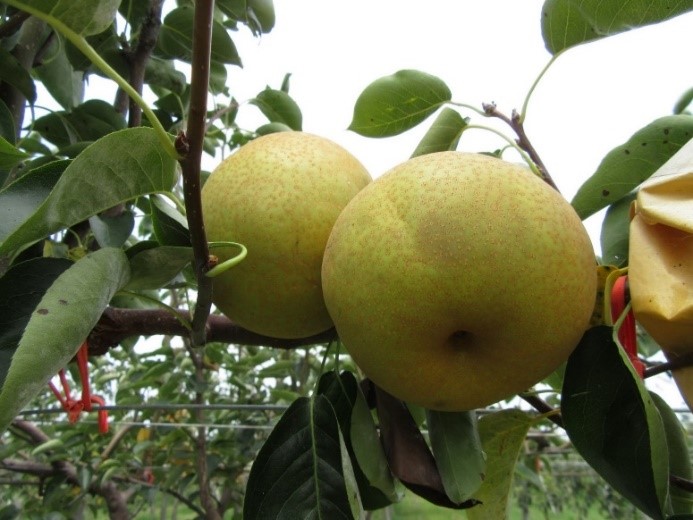
▲ Pear 'Taichung No. 5' with delicate and juicy pulp
(二)Variety breeding of Grapes
1. Grape ’Taichung No. 6’
Grape 'Taichung No. 6' obtained the plant variety rights in 2023. The fruit shape of 'Taichung No. 6' is narrow at the top and wide at the bottom, like a papaya. The berry is large size and the average weight is 9 to 12 grams. The ripe berry is purple-red or purple-black and with high sugar content. The juice of 'Taichung No. 6' has the total soluble solid contents of 18°Brix, the titratable acidity of 0.3 to 0.5% and a moderate sugar-acid ratio. The ripe fruit has an aroma of honey. One trunk two arms training system combined with short-shoot pruning can effectively save labor in field operations and it can be harvested twice a year.
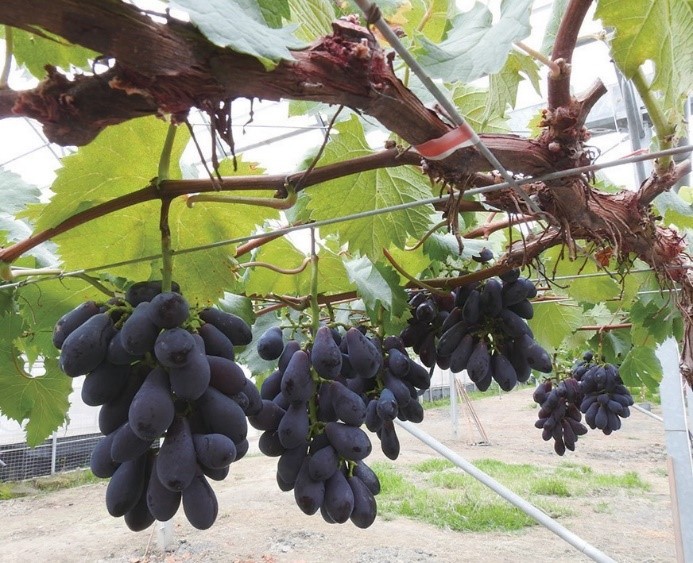
▲ Grape 'Taichung No. 6' with special shape and comparable to sapphire grapes
2. Grape’Taichung No. 5’
Grape 'Taichung No. 5' obtained the plant variety rights in 2015. The cultivation and management of 'Taichung No. 5' is accessible and the orchard can start to product about one year after planting. The ripen berry is yellow-green and the total soluble solid contents are above 20°Brix. The brewed wine has a special fruity aroma and the juice extraction rate is close to 60%.
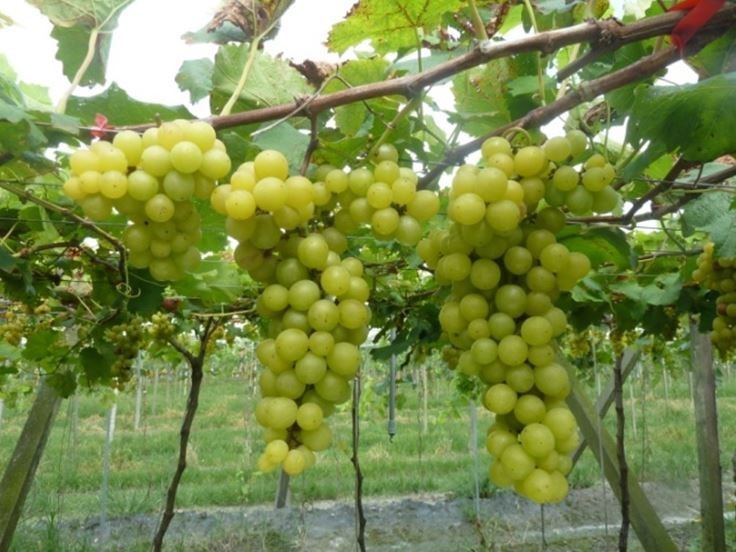
▲ Grape 'Taichung No. 5' with yellow-green peel and with fruity aroma of lychee
3. Grape’Taichung No. 4’
Grape 'Taichung No. 4' obtained the plant variety rights in 2013. The fruit cluster is tight and with short stalk; the berry is small and oval in shape; the peel is dark reddish-purple and musky; the total soluble solid contents of juice is high. The brewed wine has a rose scent.
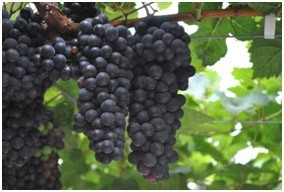
▲ fruit cluster of Grape 'Taichung No. 4'
(三)Variety breeding of Mangoes
1. Mango’Taichung No. 1’
Mango 'Taichung No. 1' obtained the plant variety rights in 2014. The fruit is elliptic in shape and the peel is yellowish-red when matures. The fruit weight is about 600 grams and the pulp is fine with less fiber, and it has an aroma of coconut milk. The total soluble solid contents of juice are 19-21 °Brix, and the acidity is 0.16-0.32%. The pulp rate is about 87% and the shelf life at room temperature is about 5-7 days.
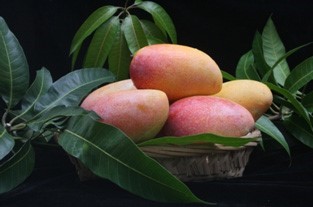
▲ Mango 'Taichung No. 1' with delicate pulp and less fiber
二、Improvements on cultivation and post-harvest techniques in fruit industry
(一)Technique of off-season production
Greenhouse grapes:combining with greenhouse and technique of LEDs supplementation at night to produce high-quality grapes for export to Japan from April to May.
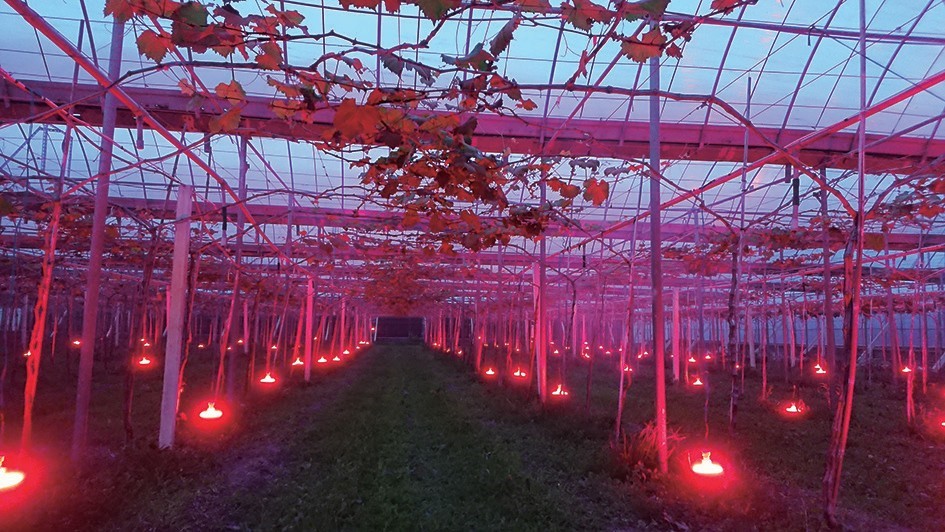
▲ Greenhouse grapes combined with technique of LEDs supplementation at night
(二)lighting technique
1. lighting technique on pitaya
In 2007, night lighting technique was developed to produce off-season pitaya in winter. This technique can increase the fruit weight and sugar content of pitaya, and the peak season of production can be extended from June to October to January in the following year. It effectively extends the harvest period by 2-3 months and increases the yield more than 50%.
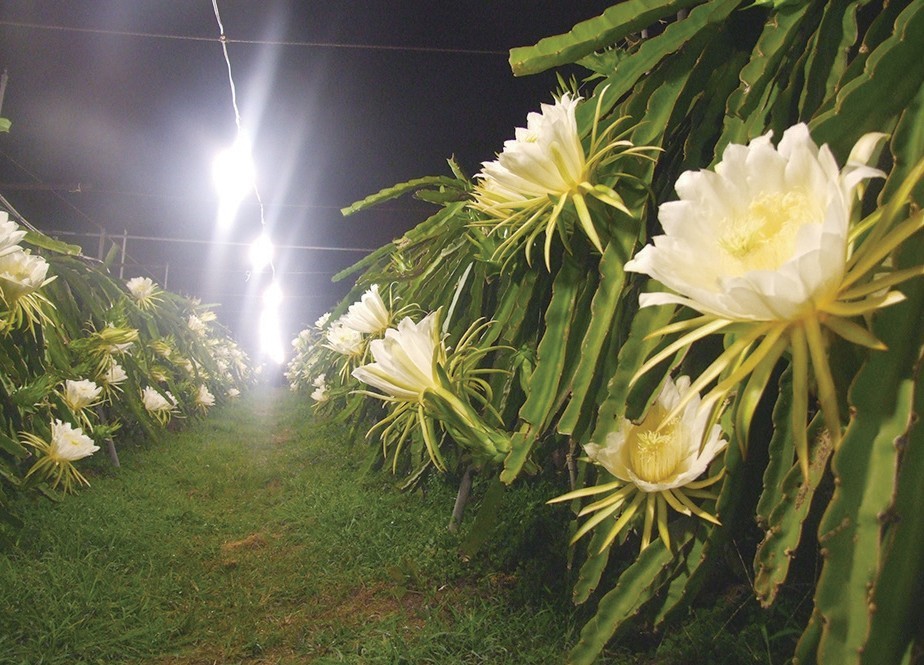
▲ Night lighting on pitaya
2. lighting technique on grapes
In 2016, technique of LEDs supplementation at night was developed to promote grape shoot growth, fruit setting and fruit quality of production. Is can also get the benefits of saving energy, reducing carbon emissions and decreasing production costs.
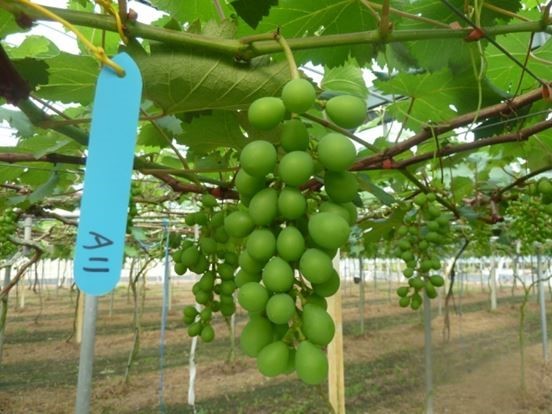
▲ LED supplementation can improve fruit setting of greenhouse grapes
(三)Improvement techniques of honeydew and sooty mould disease on pitaya
During the flowering stage, hypochlorous acid water and the characteristics of ants sucking honeydew are used to improve the occurrence of sooty mould disease.
(四)Introducing the Good Agriculture Practices to improve the key technologies of the supply chain in boutique agricultural products
Construct the Good Agriculture Practices and the key technology of production management for exporting orchards of pitaya.
(五)Micro-spray techniques of grape and passionfruit
Micro-spray technique was developed to treat grape 'Kyoho' during the flowering stage, which has the effect of improving fruit setting. The passion fruit 'Gypsophila' planted in Changhua is treated with micro-spray to increase the humidity in September and October, which can improve the problem of bud dropping caused by high temperature, help increase fruit setting and thereby increase the growth resistance.
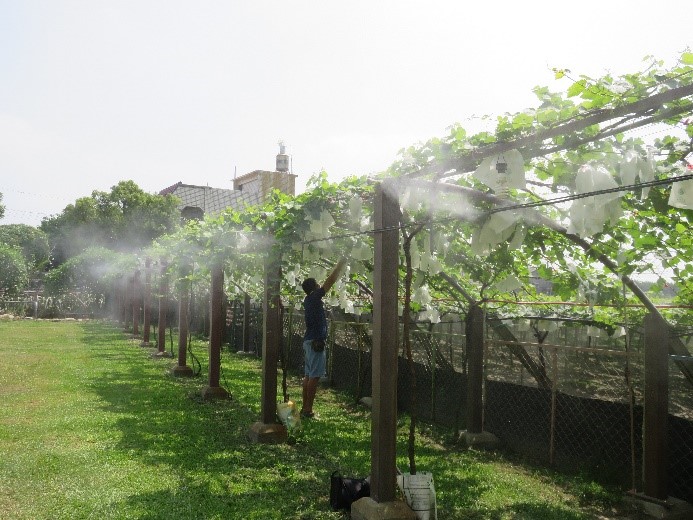
▲ Grape micro-spray technique
